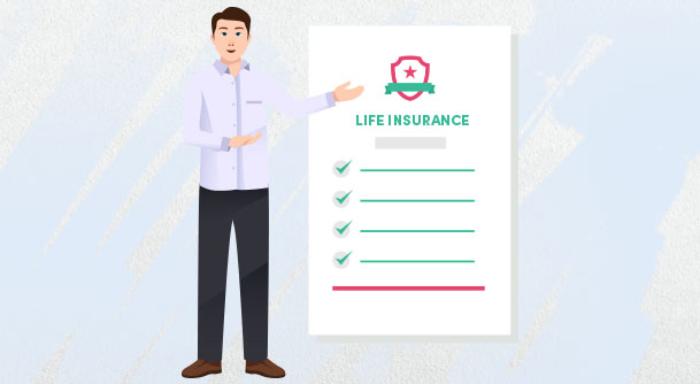Understanding Life Insurance Clauses & Disclaimer
Blog Title
263 |
As you grow older you understand why having a life insurance policy in place is a must-have for the financial security of your loved ones. If you have a life insurance policy, chances are you may already be aware of clauses, disclaimers, and exclusion of your policy. But for those who don’t have any insurance plan in place; have you ever come across an insurance ad online or on your TV, and wondered what all those disclaimers were for?
Like most financial products, insurance plans also come with a whole host of terms and conditions that you need to be aware of before making a purchase. Certain insurance clauses are quite common, and you might have come across them multiple times while exploring different insurance plans. Below is a list of the generic insurance clauses and disclaimers that are commonly used for various products. Note that the wording of the clauses/disclaimers may differ from insurer to insurer, but the general meaning behind them remains the same.
Commonly Used Insurance Clauses
Exclusion Clauses- Exclusion clauses are listed in every single insurance policy brochure. It is extremely important to go through the exclusion clause before buying any insurance product, and this is especially true for life insurance. The exclusion clause lists down all the situations where your life insurance policy will not be triggered, meaning that your family will not receive a payout if you pass away due to any of the listed conditions. The exclusion clause may differ from policy to policy, to ensure that you read the entire list thoroughly.
Clauses for Riders- Just like your life cover, your optional riders also have various clauses that you need to be aware of. Riders are completely optional add-ons to your insurance policy that further enhance your coverage. If you are planning to add riders to your policy, then you need to read through the policy brochure/document thoroughly to understand when the riders can be triggered.
For example, the Critical Illness Rider may not be triggered for every single serious disease. Each policy generally has a list of illnesses that are covered, and any illness not included in the list will not trigger the rider. If you’re looking for a policy with Critical Illness Rider, ensure that the policy clause includes a wide range of illnesses so that you are completely protected. The same principle applies to other riders as well.
Grace Period- All insurance policies come with a grace period. During this period, your policy will remain active even if you have not paid your due premiums. Ensure that you pay your premiums within the grace period itself to avoid a policy lapse. Edelweiss Tokio Life Insurance offers a grace period of 15 days for monthly premium plans, and 30 days in all other cases.
Free Look Period- The free look period is basically a trial period for your insurance policy. You can cancel your policy during the free look period to get back you paid premium (medical test cost is deducted). Edelweiss Tokio Life Insurance offers a free look period of 15 days from the day you receive the policy document. Policies sold through Distance Marketing will have a free look period of 30 days.
Commonly Used Insurance Disclaimers
In-force Policy- This disclaimer is generally used for savings insurance plans that have maturity or survival benefits. Whenever you see a clause stating that the benefit is only applicable if the policy is
‘in-force’, this means that your maturity/survival benefit is only payable if your insurance policy is still active, and you have paid all your due premiums. Moreover, if you surrender your policy, your maturity benefit (sum received at term end) will still be void, even if you have finished your premium paying term.
Tax Benefits- Most life insurance policies come with various tax benefits that can help you increase your savings. But it is important to remember that tax benefits are not decided by the insurance company itself. All tax deductions and exemptions are set by the Government of India, and hence, these benefits are subject to change based on the current tax laws set by the government. This is why any insurance product that provides tax benefits will also come with a disclaimer noting that tax laws are subject to change.
ULIP Disclaimers- A Unit Linked Insurance Plan (ULIP) is an insurance product that also invests your money into market-linked funds. This means that ULIPs provide both life cover as well as market-linked returns. However, like any market-linked investment, ULIPs are also subject to the various ups and downs of the market. When the market performs well, your returns will grow accordingly. However, if the market underperforms, then your returns might not only drop but your funds might also depreciate in value.
This is why all ULIPs come with a disclaimer that clarifies that the risk for market-funds will be borne by the customer, aka you. ULIPs are ideal if you are risk savvy or are still young/have no dependants, but they might not be right for those who are risk averse.
Understanding the Product Disclaimer
Every single product brochure and insurance advertisement will come a disclaimer for the insurance product itself. Most people just ignore this disclaimer, and for the most part, the product disclaimer only exists to verify the product’s authenticity. However, understanding the product disclaimer can help you quickly find out the basic details of the plan that may not have been included in the advertisement itself.
For example, Edelweiss Tokio Life- Zindagi Protect is tagged as “An Individual, Non-Linked, Non-Participating, Pure Risk Premium/Savings, Life Insurance Plan.” An individual plan means that Zindagi Protect is sold separately and not as part of a combination insurance product. A non-linked plan does not include market-linked investments (generally only ULIPs are market-linked). Non-participating means that the plan is not a participating plan, and hence there is no element of profit sharing or bonuses.
And Pure Risk Premium implies that the plan’s main purpose is to provide life cover in exchange for premium (the plan covers for the risk of your death). Zindagi Protect can be categorised as a savings plan as well due to its Return of Premium Option that pays back all your premiums at the end of the term.
On the other hand, Edelweiss Tokio Life – Flexi-Savings Plan is categorised as a Non-Linked, Participating, Individual, Savings, Life Insurance Plan. Reading this will quickly let you know that the plan is participating (profit sharing included), and that its primary purpose is to act as a savings plan where your premiums will eventually be paid back to you with returns.
Conclusion
Understanding the basic clauses and disclaimers related to life insurance can help you avoid making mistakes while buying a policy. Life insurance is an essential investment that ensures financial
Aastha Mestry - Portfolio Manager
An Author and a Full-Time Portfolio Manager, Aastha has 6 years of experience working in the Insurance Industry with businesses globally. With a profound interest in traveling, Aastha also loves to blog in her free time.









